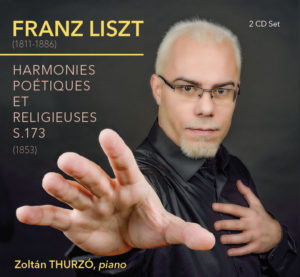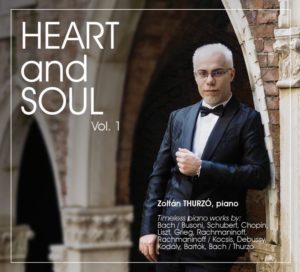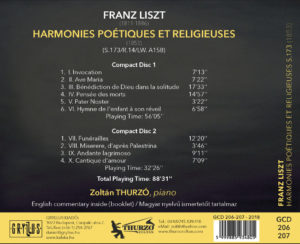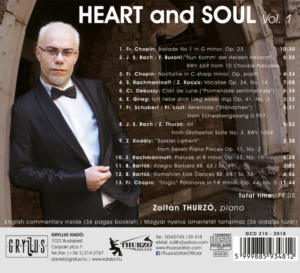Michael Haydn – Bishop Ádám Patachich’s composer
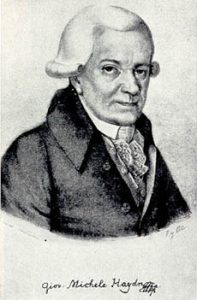 Michael Haydn (the younger brother of Joseph Haydn) was born in the village of Rohrau, in Lower Austria in 1737.
Michael Haydn (the younger brother of Joseph Haydn) was born in the village of Rohrau, in Lower Austria in 1737.
His mother (Maria Koller) worked as a cook in the house of a rich noble family and she married Mathias Haydn.
M. Haydn’s father was a poor cooper, but also an enthusiastic amateur musician: he learned to play the harp by himself and taught his sons how to sing too. The two brothers’ musical career started at the same time.
His entire life, M. Haydn was in love with music, therefore whenever given the opportunity, he played his favourite harp. Inside the big family, music was almost like a “must do”. Since the family was struggling to survive, there were no conditions for each child to be given a musical instrument, therefore, the father, who loved music, required every offspring to participate in the musical show at home, at least with their voices. Young Haydn had to overcome numerous obstacles in order to gain access to proper musical education and have his way paved.
For the young artist, who after a while became famous throughout the world, conducting Patachich’s orchestra was of good omen. Back then it meant that the conductor and composer, in the same time, had the opportunity to develop his composer’s ambitions.
Music culture in Oradea
On their arrival in the city (in 1760, not 1757 as many believe to be M. Haydn’s arrival date), Bishop Patachich gives Haydn the task of forming his orchestra in Oradea. Soon after, a barely 23 years old Haydn organized the orchestra and Episcopal choir, extended the functioning chamber orchestra. When he left Vienna, he brought along to Oradea three of his musician friends: a man playing the cello, another one playing the clarinet and one playing the horn. His aim was to strengthen the orchestra with these musicians. And so it started the great work of creating the orchestra of Oradea
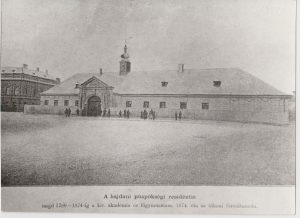 The composer-conductor who left, as legacy, 52 symphonies, pioneer concert pieces, 136 operas for musical instruments – and many other works – several were presented in Oradea, at the Bishop’s Palace (which was located right where the City Hall stands, with the right-wing, present even today, near the tower built for fire prevention. Unfortunately this has been deformed, decreasing its historical value), releasing works in first audition in its Ceremony Hall (!), had composed also quite important ecclesiastical pieces. (Let us not forget that among his tasks, composing, learning and playing this type of music were duties.)
The composer-conductor who left, as legacy, 52 symphonies, pioneer concert pieces, 136 operas for musical instruments – and many other works – several were presented in Oradea, at the Bishop’s Palace (which was located right where the City Hall stands, with the right-wing, present even today, near the tower built for fire prevention. Unfortunately this has been deformed, decreasing its historical value), releasing works in first audition in its Ceremony Hall (!), had composed also quite important ecclesiastical pieces. (Let us not forget that among his tasks, composing, learning and playing this type of music were duties.)
When M. Haydn came to Oradea, his contract required him, according to the customs of the period, to concur significantly with original works to the High Mass, fame and glory of the historic court.
Composing
Haydn composed German and Latin Masses. Besides his Requiems and anthems, the Hungarian style motifs of his A-dur ceremonial Masses so popular in the Hungarian Catholic music (ecclesiastical music) were composed while he worked in Oradea. (!)
Among the pieces composed at Patachich’s court we should mention A-dur Missa solemnist, two symphonies and the concerto B-dur primarily, composed for violin and orchestra and the concerto composed for pipe organ and viola.
Walking his own path, M. Haydn developed a particular composing style, which during almost absolute baroque music, resisted the rules that governed as laws. His opera are up-to-dated, defined by boldness, both in terms of sound and the technical criteria. His plays contain dramatic influences, uncommon in musical literature of that epoch. The content, sonority and musical text with over turns highlight the work of a modern and contemporary musical author.
An outstanding personality
It’s a wonder he catches the world’s attention? No!
Michael Haydn left Oradea in 1762 (not 1763, as many claimed ignoring the exact data), after performing with his exceptional orchestra at an event that took place in a tent, outdoor, when the foundation stone of the new Episcopal palace, a monument designed by Hillebrandt, was laid down.
A former obituary reports that “… the Bishop’s orchestra played piece of music, especially written for the event …”. Probably this piece was composed and conducted by Haydn.
After that, he will travel to Salzburg – settle down here where he remains until the end of his life – one of the contemporary Europe’s music capitals. He steps into Leopold Mozart’s footsteps as organist of the Dome, and he becomes more than that, a concert master and the court orchestra’s conductor. His works are played worldwide. His music lives its renaissance or rebirth today.
We can be proud that this remarkable artist got the best assets to start a magnificent career right here, in Oradea, even if he had lived here for only couple of years.
Not to mention that probably an important part of his musical background was forged in Oradea.

